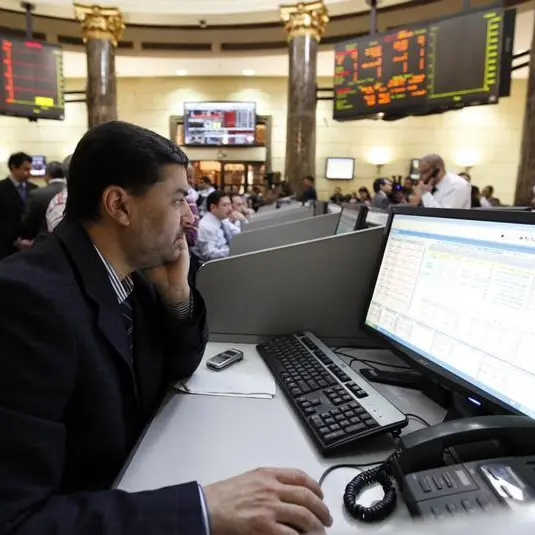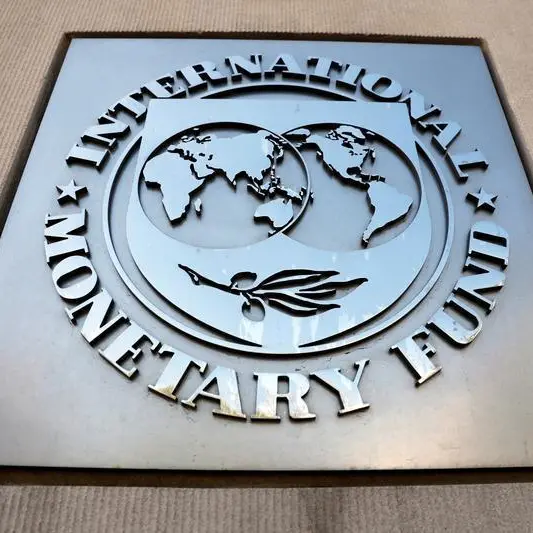PHOTO
The Central Bank of Egypt (CBE) has revealed that the total financial position of banks operating in the local market, other than itself, rose by EGP 1.166trn year-on-year (y-o-y).
This saw the financial position come in at about EGP 7.022trn by the end of December 2020, compared to about EGP 5.856trn in the previous year.
In its quarterly report on the financial indicators of banks, the CBE stated that on the assets side, cash balances in banks reached EGP 55.267bn by the end of December 2020.
Meanwhile, their balances in banks in Egypt stood at EGP 924.782bn, while their balances with banks abroad amounted to about EGP 304.873bn.
The CBE added that the balances of lending and debit to clients recorded about EGP 2.493trn, while the portfolio of securities and bank investments in Treasury bills (T-bills) recorded EGP 2.778trn.
At the level of liabilities, the CBE explained that banks’ capital was EGP 174.775bn by the end of December 2020, and reserves recorded EGP 325.761bn. At the same time, the balance of provisions amounted to about EGP 162.274bn.
The obligations of banks for each other in Egypt recorded about EGP 239.014bn, while their obligations for banks abroad recorded EGP 114.694bn. Total deposits amounted to about EGP 5.177trn, while bonds and long-term loans amounted to EGP 206.87bn.
The CBE revealed that the total financial position of the top 10 banks working in the local market reached EGP 5.509trn by the end of December 2020. Meanwhile, the total financial position of the top 5 banks reached about EGP 4.858trn.
At the top of the list of those banks are: the National Bank of Egypt (NBE); Banque Misr; Commercial International Bank (CIB); Banque du Caire; QNB AlAhli; the Arab African International Bank (AAIB); HSBC Egypt; Faisal Islamic Bank – Egypt; Alexbank; and Credit Agricole Egypt.
The CBE said that the net profits of banks operating in the Egyptian market recorded about EGP 58.906bn by the end of December 2020.
It also said that these profits were made during the period extending from 1 January to the end of December 2020 for banks whose fiscal year (FY) ends on 31 December of each year. It also covered the period from 1 July to the end of December 2020, for those banks whose FY ends on 30 June of each year.
At the top of the list of these banks are the NBE, Banque Misr, CIB, Banque du Caire, QNB AlAhli, Credit Agricole – Egypt, Faisal Islamic Bank – Egypt, and the Housing and Development Bank (HDB).
The increase in bank profits came with an increase in their net return to about EGP 161.872bn, while the revenues of banking activity rose to EGP 193.91bn, and bank expenses recorded about EGP 135.010bn.
According to the CBE, the top 10 banks in the Egyptian banking sector achieved net profits of about EGP 39.415bn by the end of December 2020, equal to about 66.9% of the total profits of banks as a whole.
The net activity revenues of the top 10 banks recorded about EGP 132.3bn, whilst the net revenue amounted to EGP 111.28bn, and the total expenses were about EGP 92.9bn. The top five banks account for about 47.18% of the total net profits of banks, which recorded EGP 27.793bn by the end of December 2020.
The net activity revenues of the five largest banks recorded about EGP 99.475bn, the net revenue amounted to EGP 83.182bbn, and the total expenses recorded about EGP 71.682bn.
The return on average assets in banks was 1.8% at the end of December 2020, compared to 1.4% in the same month of the previous year. The return on average equity stood at 23.4% in December 2020, compared to 19.2% in the previous year, while the net margin of return reached 4.1%, compared to 3%.
The return on average assets in the top 10 banks was 1.7% y-o-y, compared to 1.3% at the end of December 2019. The return on average equity was 23.5%, compared to 18.4%, while the net margin of return reached 4%, compared to 2.7%.
Return on average assets at the 5 largest banks was 1.5% at the end of December 2020, compared to 1.1% at the end of December 2019. The return on average equity was 21.6%, compared to 16.3%, while the net margin of return reached 3.8%, compared to 2.3%.
The CBE said that the non-performing loan ratio decreased to 3.6% of the total loan portfolio of banks operating in the Egyptian market by the end of December 2020, compared to 4.1% at the end of December 2019.
It explained that the non-performing loan ratio reached 2.7% of the total loans at the 10 largest banks operating in the Egyptian market, and it reached 2.2% in the top five banks.
The CBE added that banks made allocations of 96% of their total non-performing loans at the end of December 2020, compared to 97.6% at the end of December 2019. Meanwhile, the percentage of these allocations reached 100% in the 10 largest banks and the 5 largest banks in the Egyptian market.
“The volume of allocations made by banks to deal with doubtful debts amounted to about EGP 162.274bn by the end of December 2020, and the share of the top 10 banks of those allocations was EGP 109.310bn, while the volume of allocations in the five largest banks amounted to EGP 89.075bn,” according to the CBE.
It added that banks created reserves worth EGP 325.761bn by the end of December 2020, the share of the top 10 of that amount was EGP 243.504bn. Meanwhile, the volume of reserves of the five largest banks amounted to EGP 205.886bn.
The CBE said that the ratio of loans to deposits in banks operating in the local market rose to 48.2% by the end of December 2020, compared to 44.8% in December 2019. This percentage reached 46.8% in the top 10 banks, and 47.56% in the top five.
It also said that the ratio of loans to deposits in local currency reached 44.5% at the end of December 2020, compared to 39.2% at the end of December 2019, and this ratio reached 42% in the top 10 banks, and 41.9% in the top five.
The ratio of loans to deposits in foreign currencies in banks decreased to 70.3% at the end of December 2020, compared to 71.4% in December 2019. This ratio recorded 75.8% in the top 10 banks, and 86.6% in the top five.
“The private sector acquired 60% of the total loans granted by banks to their customers until the end of December 2020, compared to 63.3% at the end of December 2019,” according to the CBE.
It added that the private sector acquired 51.6% of the total loans at the 10 largest operating banks in Egypt, compared to 47.7% of the loans in the 5 largest banks.
The CBE said that the total deposits in banks reached about $5.177trn by the end of December 2020, of which EGP 4.027bn belongs to the top 10 banks. At the same time, the volume of deposits in the five largest banks operating in Egypt is about EGP 3.53trn.
The ratio of deposits to assets in banks amounted to 73.9% at the end of December 2020, compared to 72.3% at the end of December 2019, and this ratio reached 73.2% for the top 10 banks and 72.8% for the top five banks.
The CBE pointed out that there was an increase in the average effective liquidity ratio in local currency at banks in December 2020 to 49.9%. This compared to 45.8% in December 2019, with the ratio recording 51.2% in the top 10 banks, and 50% in the top five banks.
The average actual liquidity ratio in foreign currencies at banks increased to 77.6% in December 2020, compared to 74% in December 2019. This ratio reached 78.4% with the top 10 banks, and it was recorded at 79.1% in the top five banks.
The CBE said that the volume of investments of banks operating in the local market in securities and Treasury bills (T-bills) amounted to about EGP 2.778trn by the end of December 2020.
It pointed out that the volume of investments of the top 10 banks in these instruments amounted to about EGP 2.242trn, while it reached about EGP 1.954trn in the top five banks.
It pointed out that the portfolio of securities of banks, not including treasury bills, reached about 24.2% of total assets in banks at the end of December 2020, compared to 20.5% at the end of December 2019. This percentage reached 26.1% for the top 10 banks, and 27.4% for the top five.
With regard to the bank’s capital adequacy index, the CBE said that the ratio of the capital base to risk-weighted assets in banks rose to 19.5% by the end of December 2020, compared to 18.4% at the end of December 2019. This ratio reached 19.3% in the top 10 banks, and 18.9% in the top five.
The ratio of the first tranche of capital in banks to risk-weighted assets rose to 17.1%, compared to 15.9%, and this ratio reached 17% for the top 10 banks and 16.6% for the top five banks.
The CBE said that the total of the first tranche plus the hedging pillar should not be less than 6.625% for 2016, 7.25% for 2017, 7.875% for 2018, and 8.5% for 2019.
It also said that the ratio of banks’ continuing capital to risk-weighted assets was 12.6% at the end of December 2020, compared to 11.7% at the end of December 2019. This ratio was 12% for the top 10 banks and 11.4% for the top five.
According to the CBE, the continuing basic capital plus the hedging pillar should not be less than 5.125% for the year 2016, 5.75% for the year 2017, 6.375% for the year 2018, and 7% for the year 2019.
The financial leverage ratio in banks decreased to 7.3% in December 2020, compared to 7.4% in December 2019, and this ratio reached 6.7% in the top 10 banks and 6.4% in the top five.
According to the CBE, the minimum set for this percentage is 3%. Moreover, it revealed that the net open positions of foreign currencies reached 0.4% of the total capital base of banks operating in the Egyptian market by the end of December 2020. This compared to 2.9% at the end of December 2019.
The CBE explained that this ratio was 0.1% in the top 10 banks, and -0.2% in the top 5 banks. It stressed that the value of the total surplus or deficit in foreign currency centres should not exceed 20% of the capital base.
© 2021 Daily News Egypt. Provided by SyndiGate Media Inc. (Syndigate.info).












